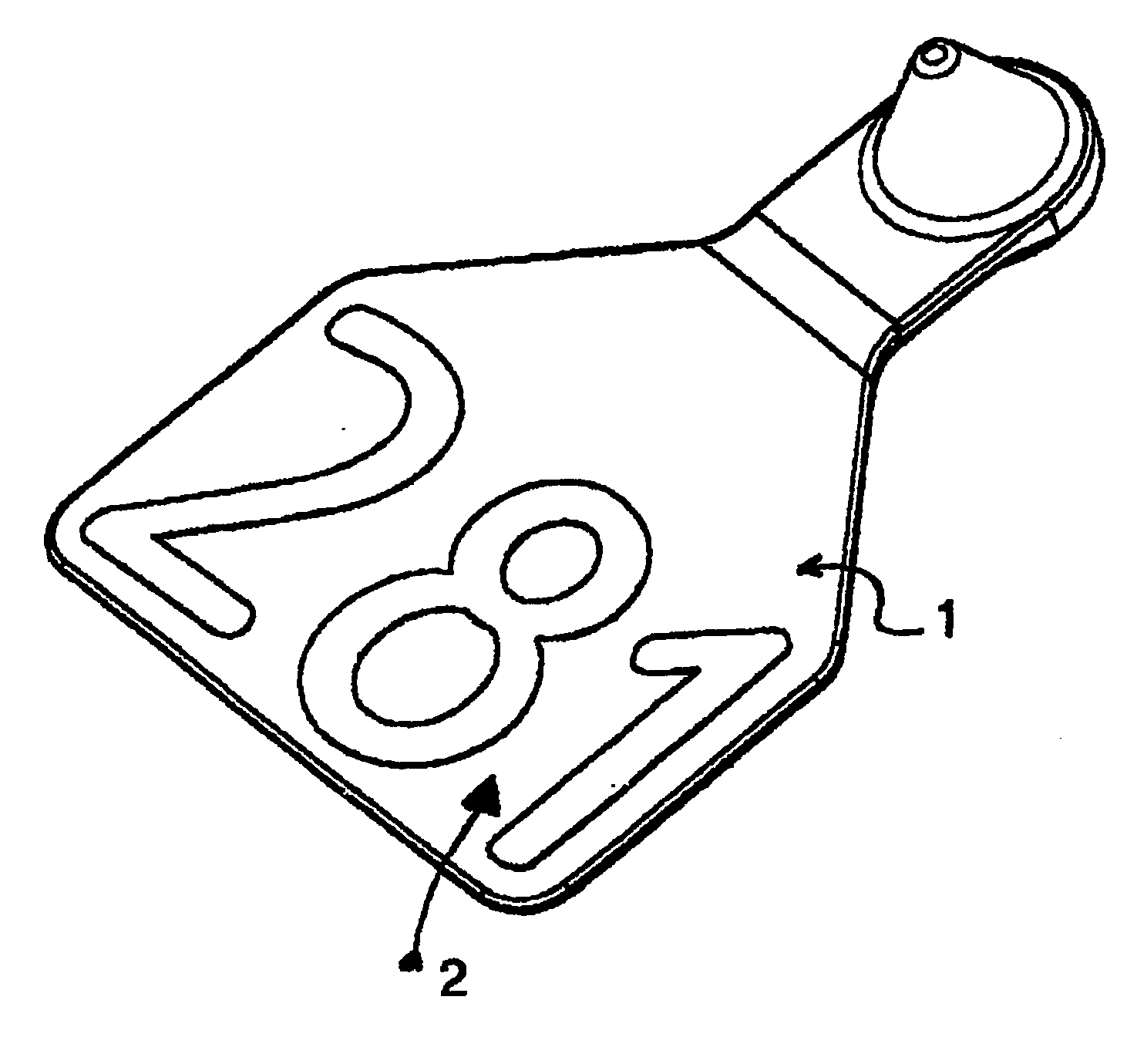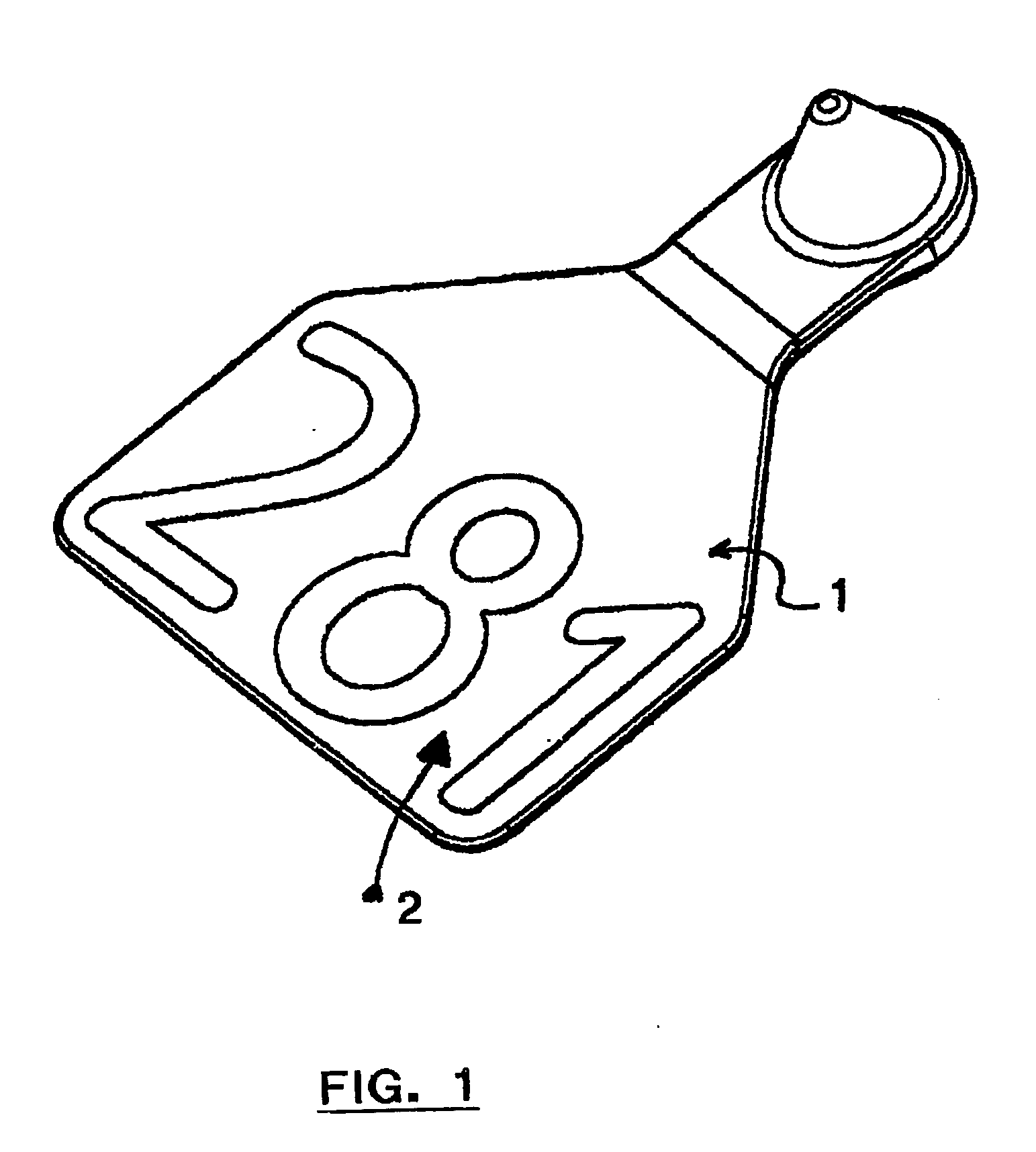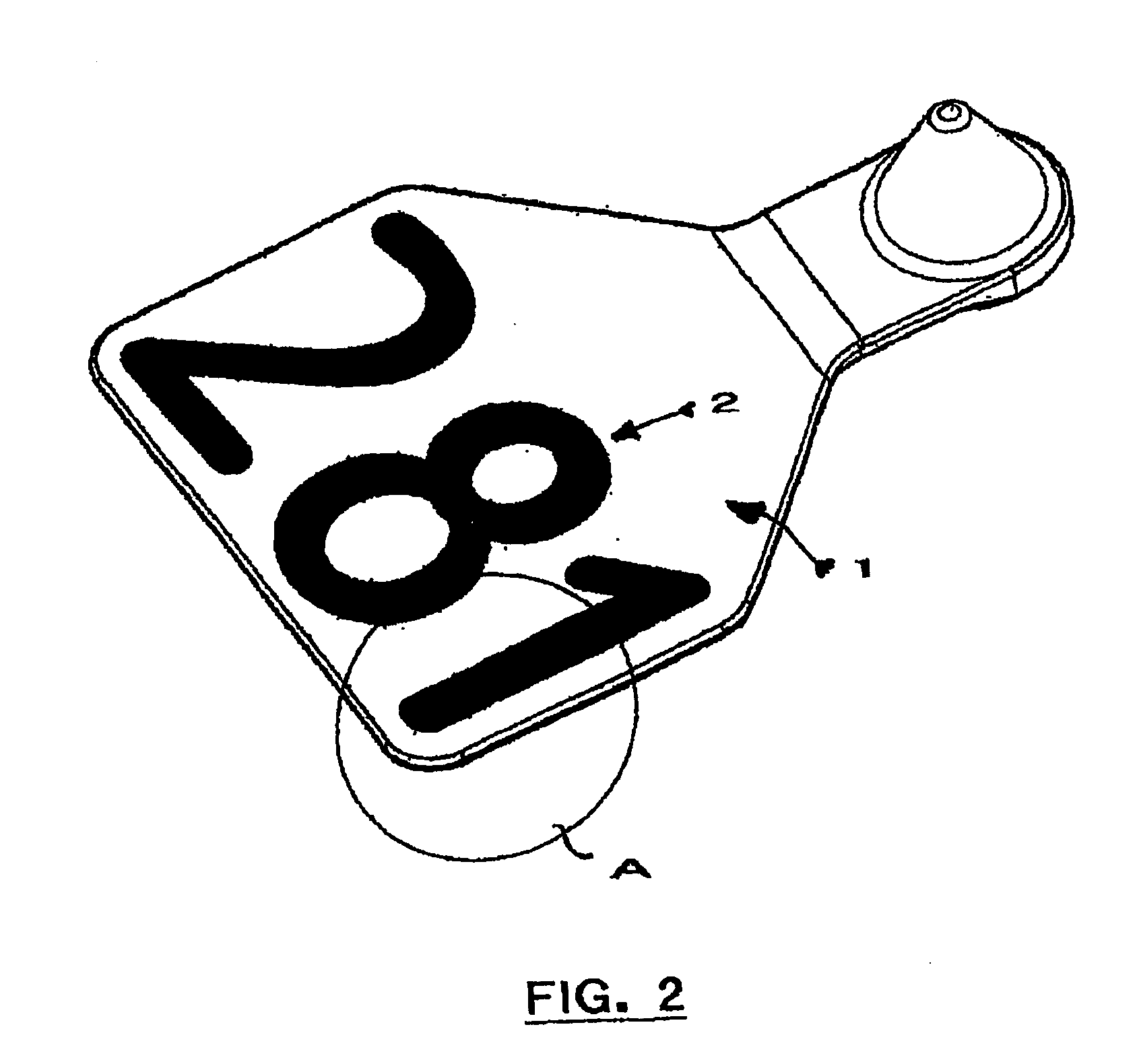Tag marking
a technology of laser marking and tag, applied in the field of improved laser marking tag, can solve the problems of limited tag life, relatively non-distinctive, burnt tag surface,
- Summary
- Abstract
- Description
- Claims
- Application Information
AI Technical Summary
Benefits of technology
Problems solved by technology
Method used
Image
Examples
Embodiment Construction
[0035] Referring to FIG. 1, a tag according to one possible embodiment of the invention is shown very diagrammatically. The tag 1, (only the female tag being shown), is shown with a typical animal ear tag indicia, which would typically identify a particular animal, by an alpha numeric code, bar code, or the like. The tag 1 is of a plastics material, typically thermoplastic polyurethane (TPU) which will have had a suitable laser additive included in the plastics material when moulded.
[0036] Indicia 2 will then have been applied by use of a suitable laser marking machine whereby the laser additive will have reacted to the laser light, typically changing the colour of the marking to a grey colour to a depth of around 0.1 mm, this grey colour being substantially non-distinctive on many colours.
[0037] Following the laser marking of the indicia, the present invention heats the tag, preferably firstly on the side of the indicia, to a temperature of between 50.degree. C. to 500.degree. C. a...
PUM
| Property | Measurement | Unit |
|---|---|---|
| Length | aaaaa | aaaaa |
| Angle | aaaaa | aaaaa |
| Angle | aaaaa | aaaaa |
Abstract
Description
Claims
Application Information
 Login to View More
Login to View More - R&D
- Intellectual Property
- Life Sciences
- Materials
- Tech Scout
- Unparalleled Data Quality
- Higher Quality Content
- 60% Fewer Hallucinations
Browse by: Latest US Patents, China's latest patents, Technical Efficacy Thesaurus, Application Domain, Technology Topic, Popular Technical Reports.
© 2025 PatSnap. All rights reserved.Legal|Privacy policy|Modern Slavery Act Transparency Statement|Sitemap|About US| Contact US: help@patsnap.com



